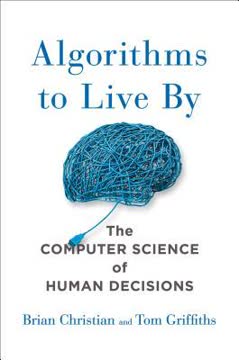Key Takeaways
1. Intelligence is measurable and has a strong genetic component
"The weight of evidence from neuroscience research is rapidly correcting outdated and erroneous beliefs."
Defining intelligence. Intelligence can be defined as a general mental ability that involves reasoning, problem-solving, planning, abstract thinking, complex idea comprehension, quick learning, and learning from experience. This definition has been supported by decades of research and is widely accepted among scientists.
Measuring intelligence. Intelligence is typically measured through standardized tests that assess various cognitive abilities. The most common measure is the Intelligence Quotient (IQ), which provides a score relative to the general population. While IQ tests have limitations, they have shown strong predictive validity for academic achievement, job performance, and various life outcomes.
Genetic influence. Twin and adoption studies have consistently demonstrated that intelligence has a substantial genetic component:
- Identical twins raised apart show similar IQ scores (correlation of about 0.70)
- Heritability estimates for intelligence range from 50% to 80%
- The influence of genes on intelligence increases with age, reaching about 80% by adulthood
2. The g-factor is central to understanding general intelligence
"The g-factor provides a bridge between the definitions of intelligence that emphasize a general mental ability and individual tests that measure (or more accurately, estimate) specific abilities."
Defining the g-factor. The g-factor, or general intelligence factor, is a construct that represents the common variance across different cognitive abilities. It was first proposed by Charles Spearman and has been consistently supported by factor analytic studies of cognitive test batteries.
Importance of g. The g-factor is crucial for understanding intelligence because:
- It accounts for about 40-50% of the variance in cognitive test performance
- It correlates strongly with important life outcomes, including academic and job performance
- It shows the highest heritability among cognitive abilities
Structure of mental abilities. While g is at the top of the hierarchy, other more specific cognitive abilities exist:
- Fluid intelligence (Gf): abstract reasoning and problem-solving
- Crystallized intelligence (Gc): acquired knowledge and skills
- Working memory, processing speed, and other domain-specific abilities
3. Brain efficiency and connectivity are linked to higher intelligence
"Higher intelligence was correlated to brain areas that show weaker inter-hemispheric homotopic connectivity, suggesting that decreased inter-hemisphere communication is related to higher intelligence."
Brain efficiency hypothesis. This theory suggests that more intelligent individuals use their brains more efficiently, requiring less neural activity to perform cognitive tasks. Evidence for this includes:
- Inverse correlations between brain activity and intelligence test scores in some studies
- Decreased brain activity after learning and practice on cognitive tasks
Brain connectivity. Research using advanced neuroimaging techniques has revealed that intelligence is related to the efficiency of information transfer within the brain:
- Higher intelligence is associated with shorter path lengths in brain networks
- The strength of connections between brain regions, especially in frontal and parietal areas, correlates with intelligence
- Both local and global efficiency of brain networks are important for cognitive performance
4. Neuroimaging reveals brain structures associated with intelligence
"The data are intriguing. The field is maturing. The pace is quickening. As intelligence research engages 21st century neuroscience, new hypotheses and new controversies are inevitable."
Key brain regions. Neuroimaging studies have identified several brain areas consistently associated with intelligence:
- Frontal lobes: involved in executive functions, planning, and decision-making
- Parietal lobes: crucial for spatial reasoning and information integration
- Temporal lobes: important for memory and language processing
- Anterior cingulate cortex: involved in error detection and cognitive control
Parieto-frontal Integration Theory (P-FIT). This model, proposed by Jung and Haier, suggests that intelligence emerges from the integration of information across a distributed network of brain regions, primarily in the frontal and parietal lobes.
Structural correlates. Several structural brain features have been linked to intelligence:
- Total brain volume (correlation of about 0.30 with IQ)
- Gray matter volume and cortical thickness in specific regions
- White matter integrity, especially in major fiber tracts
5. Specific genes influence intelligence through complex mechanisms
"Finding genes brings us closer to an understanding of the neurophysiological basis of human cognition."
Polygenic nature. Intelligence is influenced by many genes, each with a small effect:
- Genome-wide association studies (GWAS) have identified hundreds of genetic variants associated with cognitive abilities
- No single gene accounts for more than 1% of the variance in intelligence
Molecular mechanisms. Genes related to intelligence affect various neurobiological processes:
- Synaptic plasticity and neurotransmitter systems
- Neuronal growth and development
- Myelination and axonal guidance
Pleiotropic effects. Many genes influencing intelligence also affect other cognitive and non-cognitive traits, highlighting the complexity of genetic influences on brain function.
6. Environmental factors play a limited role in intelligence development
"Contrary to widespread belief, these results indicate that both fluid reasoning and processing speed are modifiable by training."
Shared vs. non-shared environment. Environmental influences on intelligence can be divided into:
- Shared environment: factors common to siblings (e.g., parenting style, socioeconomic status)
- Non-shared environment: unique experiences of individuals
Research shows that:
- Shared environmental effects decrease with age, becoming nearly zero by adulthood
- Non-shared environmental effects remain relatively stable throughout life
Early intervention studies. Attempts to boost IQ through early childhood interventions have shown:
- Short-term gains in IQ scores, often fading over time
- More lasting effects on academic achievement and life outcomes, despite IQ gains not persisting
Gene-environment interactions. The interplay between genes and environment is complex:
- Some genetic effects on intelligence may be moderated by environmental factors
- Individuals may select and create environments that match their genetic predispositions
7. Attempts to boost IQ have shown limited success
"Counter to widespread belief, these results indicate that both fluid reasoning and processing speed are modifiable by training."
Mozart effect debunked. The claim that listening to Mozart's music could temporarily increase IQ has been thoroughly refuted:
- Original study had methodological flaws
- Meta-analyses show no significant effect on intelligence
Working memory training. Attempts to increase intelligence through working memory training have produced mixed results:
- Some studies report small, short-term gains in fluid intelligence
- Meta-analyses suggest limited transfer to general cognitive abilities
Brain training games. Commercial brain training programs have not demonstrated consistent, long-term effects on intelligence:
- Short-term improvements are often limited to the trained tasks
- Little evidence of transfer to real-world cognitive performance
8. The neuroscience of intelligence has implications for education and policy
"Diversity rather than uniformity of approaches and aims would seem to be the key to making education rewarding for children of different patterns of ability."
Personalized education. Understanding individual differences in cognitive abilities can inform educational practices:
- Tailoring instruction to students' cognitive strengths and weaknesses
- Developing interventions for students with specific learning difficulties
Policy considerations. The genetic and neurobiological basis of intelligence raises important policy questions:
- Balancing equity and efficiency in educational resource allocation
- Addressing ethical concerns related to genetic testing and cognitive enhancement
Neuro-poverty concept. The author introduces the term "neuro-poverty" to describe:
- Aspects of poverty potentially related to genetic influences on intelligence
- The need for targeted interventions and support for individuals with cognitive limitations
9. Creativity and consciousness share neural networks with intelligence
"Creativity and the creative process are even more difficult to define and assess for empirical research than intelligence and reasoning."
Neural basis of creativity. Neuroimaging studies of creativity reveal:
- Involvement of both task-positive and task-negative brain networks
- A balance between cognitive control and spontaneous thought processes
Overlapping networks. Some brain regions and networks are involved in both intelligence and creativity:
- Frontal and parietal areas are crucial for both abilities
- The default mode network plays a role in both creative thinking and fluid intelligence
Consciousness and intelligence. The relationship between consciousness and intelligence is an emerging area of research:
- Both involve distributed brain networks
- Understanding one may provide insights into the other
10. Future research directions in intelligence neuroscience are promising
"Get started – science is a never-ending story; whenever you begin will be the most exciting time to work on the puzzles that define the neuroscience of intelligence."
Emerging technologies. New methods are advancing our understanding of intelligence:
- Optogenetics and chemogenetics for precise manipulation of neural circuits
- Advanced neuroimaging techniques for mapping brain connectivity
- Large-scale collaborative projects like the Human Brain Project
Chronometric approach. Measuring intelligence through information processing speed may provide:
- A more precise quantification of cognitive abilities
- Insights into the neural mechanisms underlying intelligence
Artificial intelligence and neuroscience. The development of AI systems inspired by human brain function may:
- Enhance our understanding of biological intelligence
- Lead to new hypotheses about cognitive processes
Ethical considerations. As research progresses, important ethical questions arise:
- The potential for cognitive enhancement through genetic or technological means
- Balancing individual privacy with the benefits of large-scale genetic studies
- Ensuring equitable access to any future intelligence-enhancing interventions
Last updated:
FAQ
What's The Neuroscience of Intelligence about?
- Exploration of intelligence: The book delves into the scientific understanding of intelligence, focusing on its genetic and neurobiological underpinnings.
- Neuroimaging and genetics: It emphasizes the role of advanced techniques like fMRI and PET scans in identifying brain structures linked to intelligence.
- Future research: The author speculates on enhancing intelligence through neuroscience, discussing implications for education and public policy.
Why should I read The Neuroscience of Intelligence?
- Cutting-edge research: Richard J. Haier provides insights into the latest neuroscience findings, making complex topics accessible to non-specialists.
- Debunks myths: The book addresses and dispels common misconceptions about intelligence, such as the belief that IQ tests are biased or meaningless.
- Societal implications: It discusses how understanding intelligence can inform educational practices and social policies, potentially leading to enhanced cognitive abilities.
What are the key takeaways of The Neuroscience of Intelligence?
- Intelligence is biological: The book emphasizes that intelligence is fundamentally a biological phenomenon, influenced by genetics and brain function.
- Role of genetics: A significant takeaway is the strong genetic basis for intelligence, supported by twin and family studies.
- Neuroimaging advances: Haier highlights how neuroimaging techniques have revolutionized the study of intelligence, allowing researchers to visualize brain activity and structure.
How does Richard J. Haier define intelligence in The Neuroscience of Intelligence?
- General mental ability: Haier defines intelligence as a "very general mental capability" involving reasoning, problem-solving, and learning from experience.
- Empirical measurement: He emphasizes that intelligence can be measured through various tests, refined over the past century for reliable assessments.
- Role of the g-factor: The book discusses the g-factor, a common factor underlying various mental abilities, crucial for understanding individual differences in intelligence.
What is the g-factor, and why is it important according to The Neuroscience of Intelligence?
- Common mental ability: The g-factor represents a general intelligence factor that correlates positively with various cognitive abilities.
- Predictive validity: It is a strong predictor of real-world outcomes, such as academic success and job performance.
- Foundation for research: Understanding the g-factor is essential for intelligence research, providing a framework for studying cognitive abilities.
How does genetics influence intelligence according to The Neuroscience of Intelligence?
- Major genetic effects: Haier presents evidence from twin and adoption studies showing genetics accounts for a significant portion of intelligence variance.
- Polygenic nature: Intelligence is influenced by many genes, each contributing a small effect, complicating the search for specific intelligence genes.
- Environmental interactions: Genetic expression can be influenced by environmental factors, highlighting the importance of epigenetics in understanding intelligence.
What role does neuroimaging play in studying intelligence in The Neuroscience of Intelligence?
- Visualizing brain activity: Neuroimaging techniques like PET and fMRI allow researchers to observe brain activity in real-time.
- Identifying brain networks: These methods help identify networks of brain areas associated with intelligence, supporting the Parieto-frontal Integration Theory (PFIT).
- Understanding efficiency: Studies reveal that higher intelligence is often associated with more efficient brain activity.
What is the Parieto-frontal Integration Theory (PFIT) in The Neuroscience of Intelligence?
- Network model of intelligence: PFIT posits that intelligence arises from interactions between the parietal and frontal lobes.
- Empirical support: The theory is supported by neuroimaging studies showing consistent activation patterns in these brain areas.
- Individual differences: PFIT suggests different individuals may achieve similar intelligence levels through varying brain area activations.
How does The Neuroscience of Intelligence address the nature vs. nurture debate?
- Genetic influences: The book presents strong evidence for the genetic basis of intelligence, emphasizing heritability's significant role.
- Environmental factors: It acknowledges environmental factors' importance, suggesting interventions can mitigate disadvantages associated with lower SES.
- Complex interactions: Intelligence results from complex interactions between genetic and environmental factors, encouraging a holistic understanding.
How does The Neuroscience of Intelligence propose enhancing intelligence?
- Potential methods: Haier discusses methods like cognitive training, brain stimulation, and genetic interventions for enhancing intelligence.
- Neuroimaging and genetics: The integration of these fields is seen as promising for understanding and potentially enhancing intelligence.
- Ethical considerations: The book raises ethical questions about cognitive enhancement, particularly regarding access and societal impact.
What are the best quotes from The Neuroscience of Intelligence and what do they mean?
- “The good thing about science is that it’s true whether or not you believe in it.”: Emphasizes the objective nature of scientific inquiry.
- “No story about the brain is simple.”: Reflects the complexity of brain functions and intelligence.
- “Finding ways to maximize a person’s use of their intelligence is one goal of education.”: Highlights the educational implications of understanding intelligence.
What is the significance of the "Mozart Effect" discussed in The Neuroscience of Intelligence?
- Initial claims: The "Mozart Effect" refers to the claim that listening to classical music can temporarily enhance intelligence.
- Meta-analysis findings: Subsequent analyses show the effect is minimal and not robust.
- Cautionary tale: The discussion serves as a cautionary tale about over-interpreting research findings and emphasizes rigorous scientific validation.
Review Summary
The Neuroscience of Intelligence is praised for its comprehensive overview of intelligence research, accessible writing, and honest approach to controversial topics. Readers appreciate Haier's explanations of complex concepts and his encouragement of critical thinking. The book covers genetic influences, brain imaging, and potential interventions. Some criticize the author's bias towards biological explanations and lack of focus on environmental factors. Overall, it's considered a valuable resource for students and those interested in intelligence research, though some find the technical details challenging.
Similar Books







Download PDF
Download EPUB
.epub digital book format is ideal for reading ebooks on phones, tablets, and e-readers.




